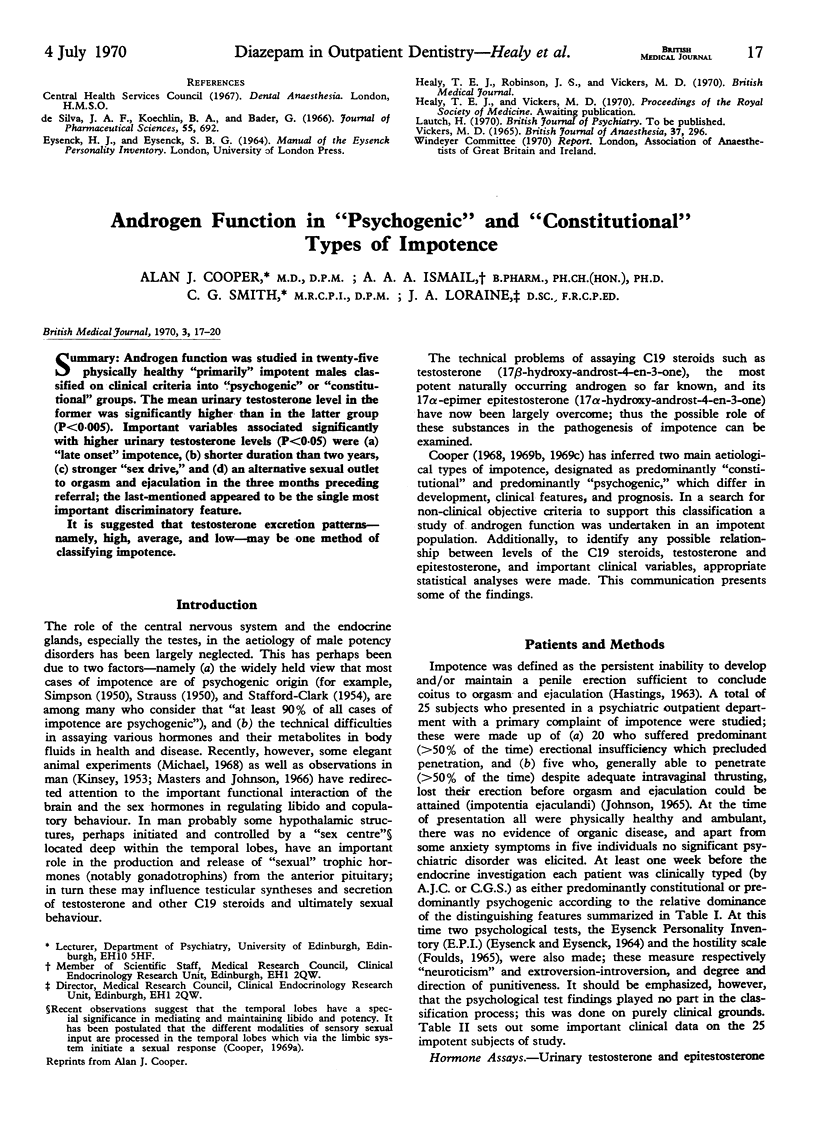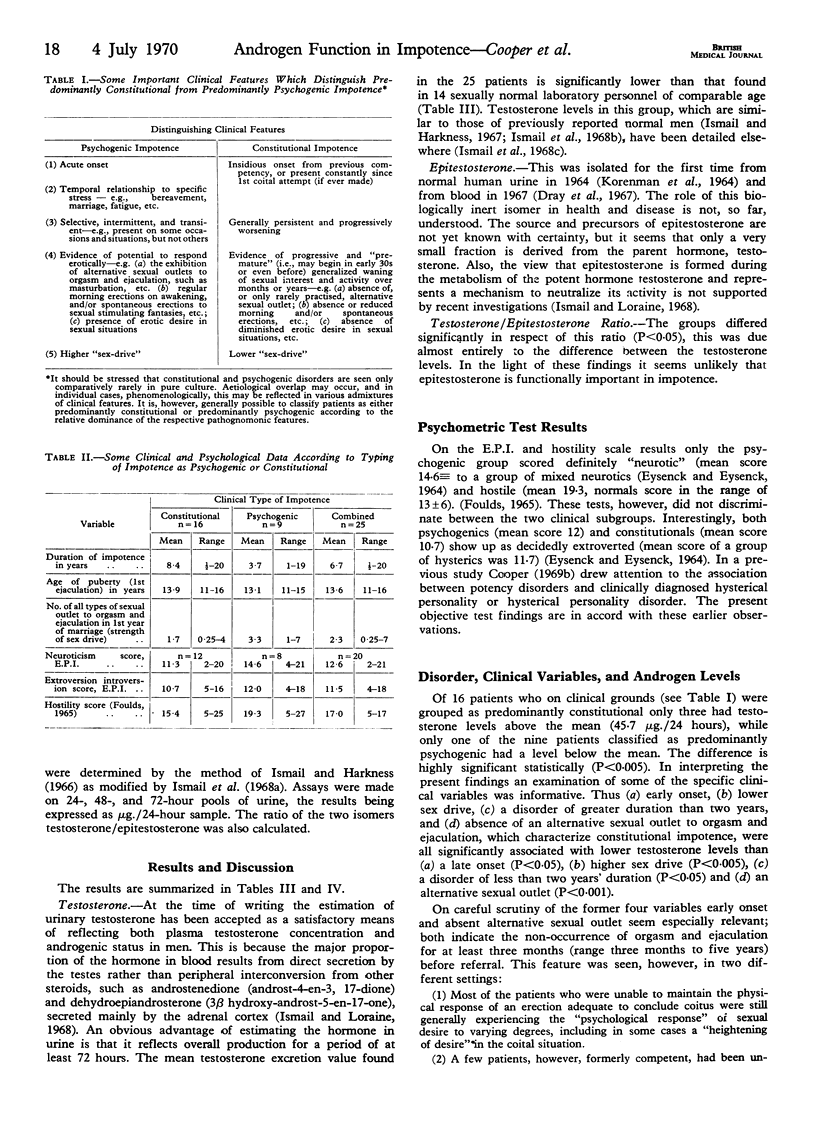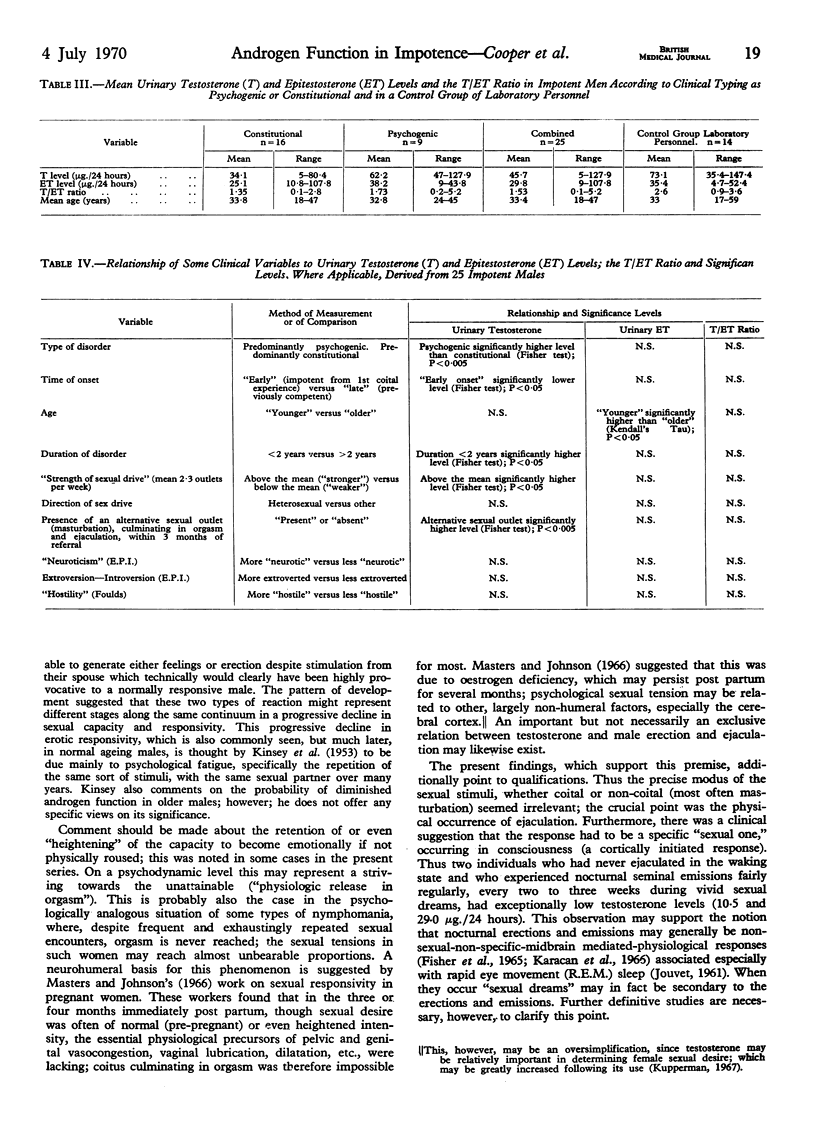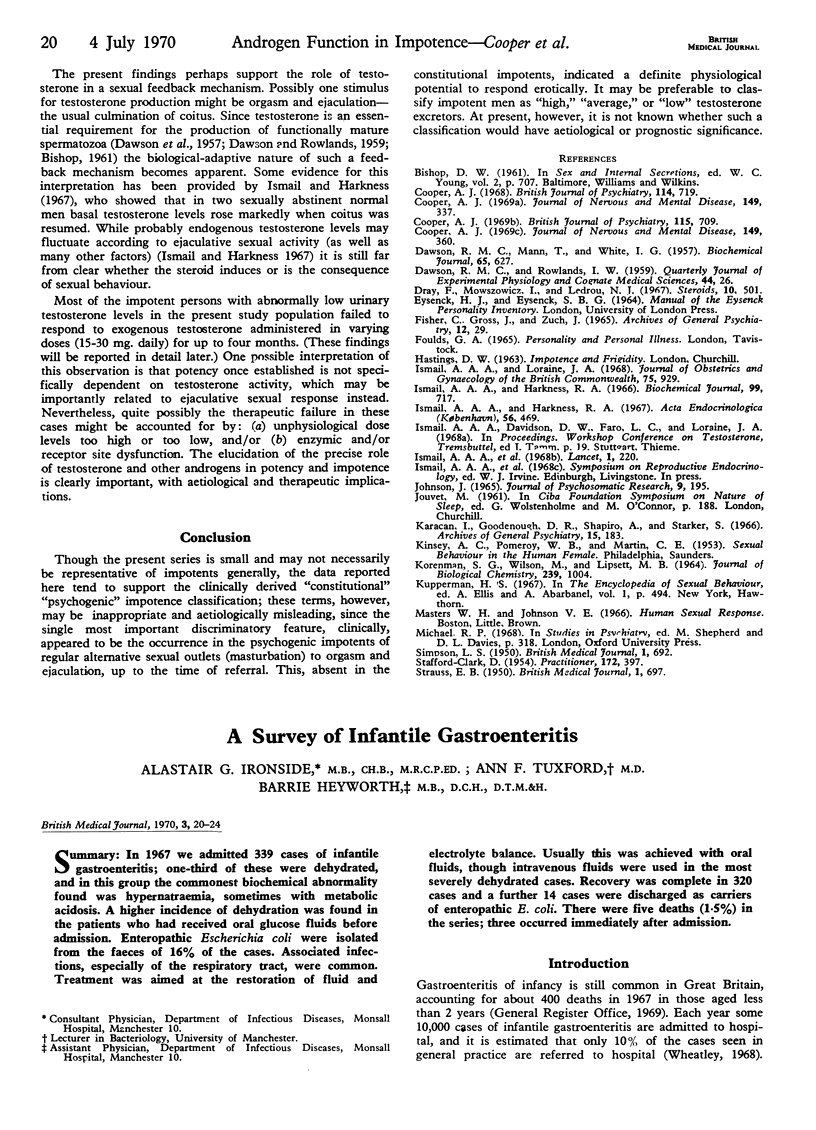Abstract
Androgen function was studied in twenty-five physically healthy “primarily” impotent males classified on clinical criteria into “psychogenic” or “constitutional” groups. The mean urinary testosterone level in the former was significantly higher than in the latter group (P<0·005). Important variables associated significantly with higher urinary testosterone levels (P<0·05) were (a) “late onset” impotence, (b) shorter duration than two years, (c) stronger “sex drive,” and (d) an alternative sexual outlet to orgasm and ejaculation in the three months preceding referral; the last-mentioned appeared to be the single most important discriminatory feature.
It is suggested that testosterone excretion patterns—namely, high, average, and low—may be one method of classifying impotence.
Full text
PDF



Selected References
These references are in PubMed. This may not be the complete list of references from this article.
- Cooper A. J. A factual study of male potency disorders. Br J Psychiatry. 1968 Jun;114(511):719–731. doi: 10.1192/bjp.114.511.719. [DOI] [PubMed] [Google Scholar]
- Cooper A. J. Disorders of sexual potency in the male: a clinical and statistical study of some factors related to short-term prognosis. Br J Psychiatry. 1969 Jun;115(523):709–719. doi: 10.1192/bjp.115.523.709. [DOI] [PubMed] [Google Scholar]
- DAWSON R. M., MANN T., WHITE I. G. Glycerylphosphorylcholine and phosphorylcholine in semen, and their relation to choline. Biochem J. 1957 Apr;65(4):627–634. doi: 10.1042/bj0650627. [DOI] [PMC free article] [PubMed] [Google Scholar]
- Dray F., Mowszowicz I., Ledru M. J. Identification and measurement of epitestosterone in the sulfate fraction of plasma of normal men. Steroids. 1967 Nov;10(5):501–507. doi: 10.1016/0039-128x(67)90125-0. [DOI] [PubMed] [Google Scholar]
- FISHER C., GORSS J., ZUCH J. CYCLE OF PENILE ERECTION SYNCHRONOUS WITH DREAMING (REM) SLEEP. PRELIMINARY REPORT. Arch Gen Psychiatry. 1965 Jan;12:29–45. doi: 10.1001/archpsyc.1965.01720310031005. [DOI] [PubMed] [Google Scholar]
- Ismail A. A., Harkness R. A. A method for the estimation of urinary testosterone. Biochem J. 1966 Jun;99(3):717–725. doi: 10.1042/bj0990717. [DOI] [PMC free article] [PubMed] [Google Scholar]
- Ismail A. A., Harkness R. A. Urinary testosterone excretion in men in normal and pathological conditions. Acta Endocrinol (Copenh) 1967 Nov;56(3):469–480. doi: 10.1530/acta.0.0560469. [DOI] [PubMed] [Google Scholar]
- KORENMAN S. G., WILSON H., LIPSETT M. B. ISOLATION OF 17-ALPHA-HYDROXYANDROST-4-EN-3-ONE (EPITESTOSTERONE) FROM HUMAN URINE. J Biol Chem. 1964 Apr;239:1004–1006. [PubMed] [Google Scholar]
- STAFFORD-CLARK D. The etiology and treatment of impotence. Practitioner. 1954 Apr;172(1030):397–404. [PubMed] [Google Scholar]
- Strauss E. B. Psychiatric Aspects of Impotence. Br Med J. 1950 Mar 25;1(4655):697–699. doi: 10.1136/bmj.1.4655.697. [DOI] [PMC free article] [PubMed] [Google Scholar]


